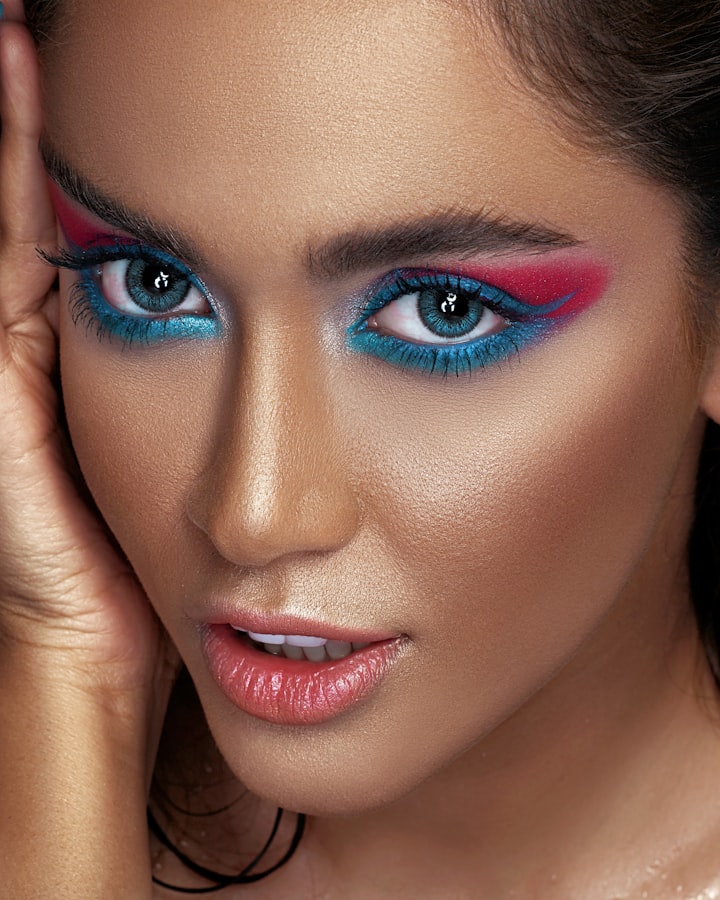Women and Makeup
A History of Beauty and Self-Expression

Makeup, a universal form of self-expression and enhancement, has played a significant role in the lives of women throughout history. Its evolution is a fascinating journey that reflects cultural, societal, and personal values and preferences. From ancient civilizations to the modern era, makeup has been a tool for empowerment, creativity, and confidence. In this essay, we will explore the history of women and makeup, tracing its origins, evolution, and enduring significance.
Ancient Origins
The history of makeup can be traced back thousands of years to ancient civilizations. Archaeological discoveries have revealed evidence of cosmetics used by the Egyptians as early as 3500 BCE. Ancient Egyptian women, including Queen Cleopatra, used various substances such as kohl, a black powder made from crushed minerals, to line their eyes, and red ochre to color their lips and cheeks. These cosmetics were not only for beauty but also for protection against the sun and symbolic of social status.
In ancient Greece and Rome, makeup was also common. Women used white lead-based face powder for a pale complexion and various natural ingredients like crushed berries for lip color. The use of makeup was closely linked to social status and cultural norms.
Medieval and Renaissance Eras
During the Middle Ages, makeup fell out of favor in Europe due to religious influences that associated it with sin. However, in the Renaissance period, makeup experienced a revival. Pale skin was still prized, and women used lead-based face powder, often resulting in health issues. The 16th-century Italian Renaissance saw the emergence of elaborate makeup techniques, with women enhancing their features using cosmetics made from crushed insects and other natural substances.
The Victorian Era
The Victorian era brought a shift in beauty ideals, emphasizing purity and modesty. Pale skin, achieved with lead-based cosmetics, remained popular, but the use of makeup was generally discouraged by societal norms. Makeup was seen as vulgar, and women were expected to appear natural and virtuous.
20th Century Revolution
The 20th century marked a turning point in the history of makeup. With the rise of the film industry, makeup became an essential tool for actors, leading to innovations in cosmetics. Max Factor, a pioneer in makeup artistry, developed the first foundation for film stars in 1914. The 1920s saw the "Flapper" era, characterized by bold makeup trends, including dark eyes and red lips, reflecting the changing social landscape and women's newfound freedom and empowerment.
World War II had a significant impact on makeup trends. With the rationing of cosmetics and materials, women had to get creative. The iconic "Rosie the Riveter" image emerged, representing strong, empowered women who could do manual labor while wearing minimal makeup.
The 1960s and 1970s brought about the "natural look" as a rebellion against heavy makeup. Celebrities like Twiggy and Brigitte Bardot popularized a more minimalistic approach. In the 1980s, makeup became bold and extravagant again, with bright colors and dramatic styles.
If you like this then support me click on it and buy some items, it will support me. click here.
Modern Makeup Trends
Today, makeup is a billion-dollar industry, offering an endless array of products and techniques. The beauty industry has made strides in promoting inclusivity, with makeup brands diversifying their shade ranges to cater to all skin tones. Makeup is now seen as a form of self-expression, artistry, and creativity rather than a mere societal obligation.
Makeup allows women to experiment with different looks, boost confidence, and express their individuality. It can be a form of self-care and a way to enhance one's natural features. The rise of social media and makeup tutorials has democratized beauty, allowing anyone to become a makeup artist and share their unique styles with the world.
Conclusion
The history of women and makeup is a fascinating journey through time, reflecting changing cultural norms, societal ideals, and individual preferences. From ancient Egypt to the modern era, makeup has been a tool for self-expression, empowerment, and creativity. It has evolved from lead-based powders and limited options to a vast industry that celebrates diversity and inclusivity. Makeup is not merely about enhancing physical beauty but also about boosting confidence and expressing one's unique identity. As makeup continues to evolve, it remains a powerful symbol of women's autonomy and the enduring pursuit of beauty in all its forms.
If you like this then support me click on it and buy some items, it will support me. click here.
About the Creator
Muhammad Siraj
Siraj shows a deep love for understanding the natural world and how everything is connected. They're always eager to learn more and have a true appreciation for the wonders of life on Earth





Comments (1)
Great work! Fantastic 💙♥️💜💚🤎